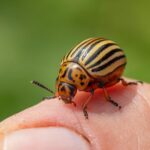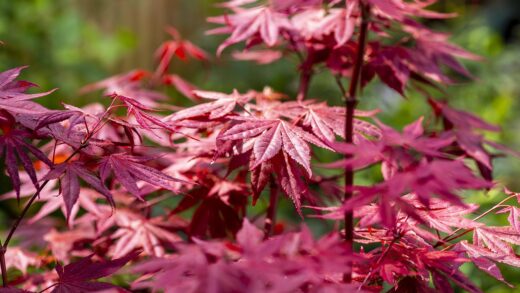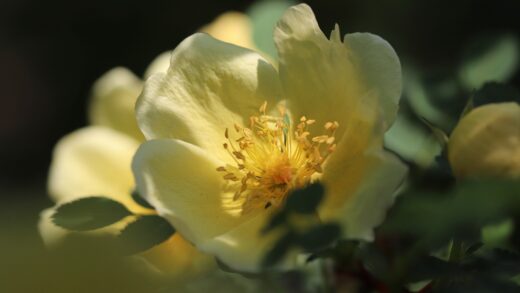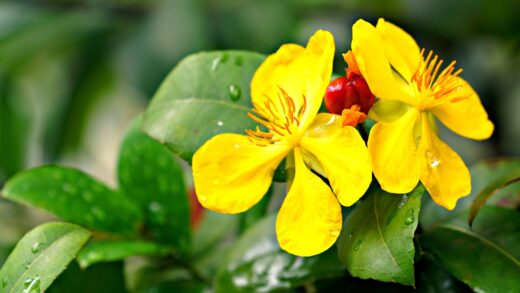Understanding the specific water requirements of Caryopteris is fundamental to its successful cultivation, as improper irrigation is the most common pitfall in growing this otherwise resilient shrub. A key characteristic of bluebeard is its remarkable drought tolerance once it has become established in the landscape. This trait makes it an excellent candidate for water-wise gardens, rockeries, and other areas where consistent moisture is not guaranteed. However, this tolerance for dry conditions does not mean the plant can be completely neglected, especially during its formative first year in the garden. During this critical establishment phase, a consistent and thoughtful watering regimen is necessary to encourage the development of a deep, extensive root system that will sustain the plant in the future.
The journey to drought tolerance begins at planting. For a newly planted Caryopteris, regular watering is essential. For the first few weeks, the soil should be kept consistently moist to help the roots recover from the shock of transplanting and begin to grow into the surrounding soil. This typically translates to watering every two to three days, depending on weather conditions. After this initial period, the frequency can be gradually reduced to a deep watering once a week for the remainder of the first growing season. The goal is to provide enough moisture to prevent stress but also to encourage the roots to seek water deeper in the soil profile.
The method of watering is just as important as the frequency. It is far more beneficial to water Caryopteris deeply and infrequently rather than providing shallow, frequent sprinkles. Deep watering involves applying water slowly over a prolonged period, allowing it to penetrate 15 to 20 centimeters into the soil. This encourages the roots to grow downwards, making the plant more stable and more resilient to drought. Shallow watering, in contrast, encourages the development of a shallow root system that is much more vulnerable to drying out during hot, dry spells. Using a soaker hose or drip irrigation system is an efficient way to deliver water directly to the root zone while minimizing evaporation and keeping the foliage dry.
A simple yet effective way to determine if it is time to water is to check the soil moisture manually. By inserting a finger into the soil near the base of the plant to a depth of about 5 to 7 centimeters, a gardener can gauge the moisture level. If the soil feels dry at this depth, it is time to water. If it still feels moist, it is best to wait a few more days before checking again. This hands-on approach is more reliable than adhering to a rigid schedule, as it accounts for variables such as rainfall, temperature, humidity, and soil type.
Establishing new plants
The first year in the ground is the most critical period for the water needs of a Caryopteris shrub. During this establishment phase, the plant is dedicating a significant amount of energy to developing a strong and healthy root system. This root network will be its lifeline, responsible for anchoring the plant and absorbing the water and nutrients it needs to thrive in subsequent years. Therefore, providing adequate and consistent moisture during this time is not just about keeping the plant alive; it is an investment in its long-term health and drought tolerance.
More articles on this topic
Immediately after planting, a thorough and deep watering is crucial to settle the soil around the root ball and eliminate any air pockets. For the following weeks, the focus should remain on keeping the root zone consistently moist but not waterlogged. The frequency of watering will depend heavily on environmental factors. In hot, windy weather, a new plant may need watering every other day, while during cooler, overcast periods, twice a week may suffice. The key is to monitor the soil and the plant’s appearance, looking for any signs of wilting, which would indicate a need for water.
As the season progresses and the plant begins to establish, the frequency of watering can be gradually tapered off. This encourages the roots to grow deeper in search of moisture, which is the very foundation of drought tolerance. By mid to late summer, a deep watering once a week should be sufficient for a spring-planted shrub, assuming there has not been significant rainfall. It is important to remember that the goal is to wean the plant off constant irrigation and prepare it for a more self-sufficient existence.
Applying a layer of organic mulch around the base of the newly planted Caryopteris can be highly beneficial. A 5 to 7-centimeter layer of wood chips, shredded bark, or compost helps to conserve soil moisture by reducing evaporation from the surface. Mulch also helps to suppress weed growth, which would otherwise compete with the new shrub for available water. Furthermore, it helps to moderate soil temperature, keeping the roots cooler in the summer. Be sure to keep the mulch a few centimeters away from the stem of the plant to prevent any issues with crown rot.
Watering mature shrubs
Once a Caryopteris shrub has successfully navigated its first growing season, its water requirements change dramatically. A well-established bluebeard is exceptionally drought-tolerant and thrives in conditions that would cause many other garden plants to struggle. This resilience is due to the deep root system it developed during its establishment phase. For mature plants, the principle of “less is more” should guide the irrigation strategy. Overwatering is a far more common and serious problem for established Caryopteris than underwatering.
More articles on this topic
In many temperate climates that receive regular rainfall, established Caryopteris may not require any supplemental watering at all. They are adept at sourcing the moisture they need from the soil. The need for irrigation only arises during prolonged periods of drought, especially when combined with high temperatures. Even in these situations, a deep soaking every few weeks is typically all that is required to keep the plant healthy. It is important to allow the soil to dry out completely between waterings.
The signs of a thirsty Caryopteris can be subtle. The leaves may start to look slightly dull or grayish, and in severe cases, the plant may begin to wilt during the hottest part of the day. If wilting is observed, it is a clear indication that the plant needs water. However, it is important to check the soil moisture first, as wilting can also be a symptom of root rot caused by excessive water. If the soil is dry several inches down, then a deep and thorough watering is warranted. The plant should recover quickly once it is rehydrated.
For gardeners aiming to create a truly low-water or xeriscape garden, Caryopteris is an excellent choice. Its ability to thrive with minimal supplemental irrigation makes it a sustainable and environmentally friendly option. By grouping it with other drought-tolerant plants that have similar water needs, such as lavender, sedum, and ornamental grasses, a beautiful and resilient garden can be created that conserves water resources while providing a long season of interest and color.
The dangers of overwatering
While a lack of water can stress a young plant, an excess of water is a far greater threat to Caryopteris of any age. This shrub is physiologically adapted to well-drained, somewhat dry conditions, and its root system is not equipped to handle prolonged periods of saturation. Overwatering deprives the roots of oxygen, creating an anaerobic environment that is ideal for the growth of pathogenic fungi. This leads to the development of root rot, a condition that is often fatal and difficult to remedy once it has taken hold.
The initial symptoms of overwatering can be confusingly similar to those of underwatering. The plant may appear to wilt, and its leaves may turn yellow and drop prematurely. This often leads well-intentioned gardeners to apply even more water, believing the plant is thirsty, which only exacerbates the problem. The key difference is that a wilting plant in waterlogged soil will not perk up after being watered. A quick check of the soil moisture will reveal the true cause of the problem; if the soil is soggy, overwatering is the culprit.
Root rot begins when the waterlogged conditions allow fungal spores, which are naturally present in the soil, to multiply and attack the plant’s root system. The infected roots become brown, mushy, and are no longer able to absorb water and nutrients effectively. As the disease progresses up into the crown of the plant, the entire shrub will begin to decline. By the time significant symptoms are visible above ground, the damage to the root system is often extensive and irreversible.
Preventing overwatering is therefore the most critical aspect of Caryopteris irrigation. This starts with selecting a planting site with excellent drainage. Amending heavy soils with organic matter is essential. After the establishment period, it is crucial to resist the temptation to water too frequently. Always allow the top several centimeters of soil to dry out before considering irrigation. For plants in containers, ensure the pot has ample drainage holes and use a gritty, fast-draining potting mix. By respecting the plant’s natural preference for drier conditions, gardeners can easily avoid the perilous issue of overwatering.
Container-specific irrigation
Cultivating Caryopteris in containers offers a wonderful way to enjoy its late-season blooms on patios, balconies, and decks. However, growing plants in pots presents a different set of watering challenges compared to growing them in the ground. The limited volume of soil in a container can dry out much more quickly than garden soil, especially on hot, windy days. This means that even a drought-tolerant plant like Caryopteris will require more frequent watering when grown in a pot.
The choice of container and potting medium is crucial for success. A pot made from a porous material like terracotta will dry out faster than a plastic or glazed ceramic one. Regardless of the material, it is absolutely essential that the container has adequate drainage holes at the bottom to allow excess water to escape freely. Using a high-quality, well-draining potting mix is also vital. A mix designed for cacti and succulents, or a standard potting mix amended with perlite or coarse sand, will provide the sharp drainage that Caryopteris demands.
During the growing season, a potted Caryopteris will likely need to be watered whenever the top 2 to 3 centimeters of the potting mix feels dry to the touch. This could be as often as every other day during a heatwave, or as infrequently as once a week during cooler weather. The best practice is to water thoroughly until water begins to run out of the drainage holes at the bottom. This ensures that the entire root ball is moistened. After watering, allow the pot to drain completely and do not let it sit in a saucer of water, as this will lead to saturated conditions and root rot.
In the winter, the watering needs of a container-grown Caryopteris decrease significantly as the plant enters dormancy. The goal is to keep the soil from becoming completely bone-dry. Watering may only be necessary once every few weeks, depending on the storage conditions. If the pot is moved into a sheltered, unheated location like a garage, it will require very little water. Overwintering a potted Caryopteris requires a careful balance to prevent both desiccation and rot, ensuring the plant remains healthy until it resumes active growth in the spring.
📷Agnieszka Kwiecień, Nova, CC BY-SA 4.0, via Wikimedia Commons


















